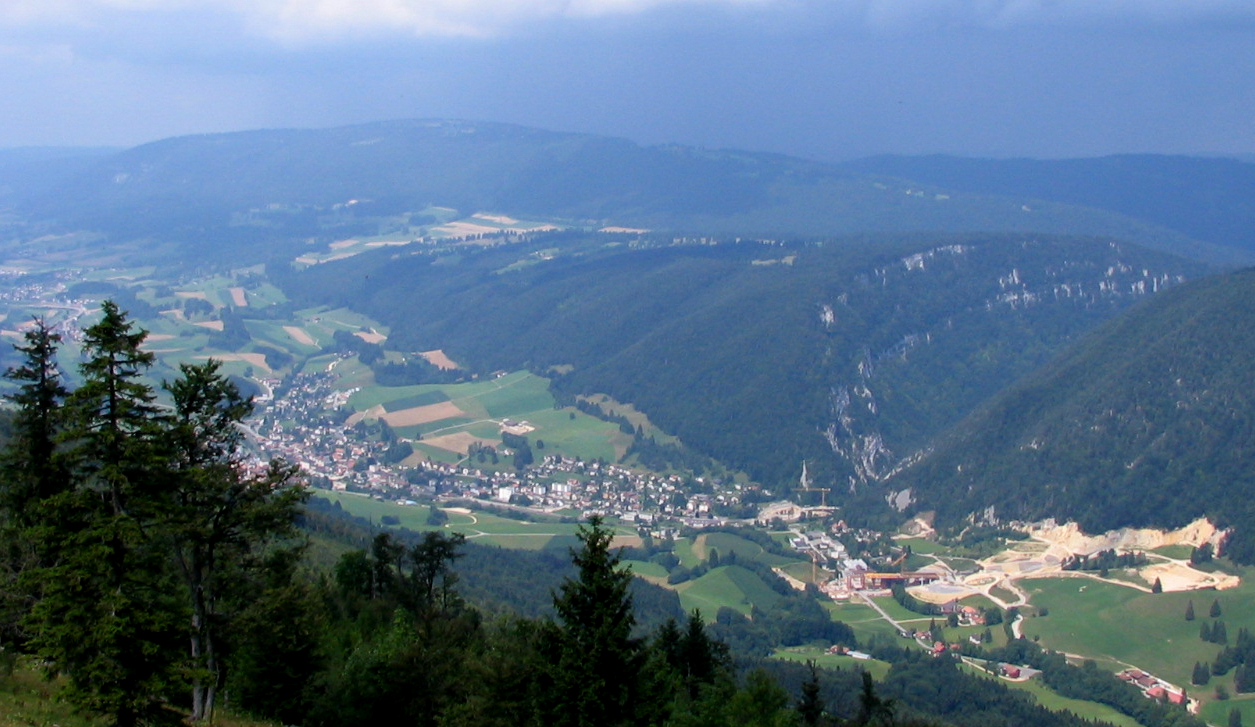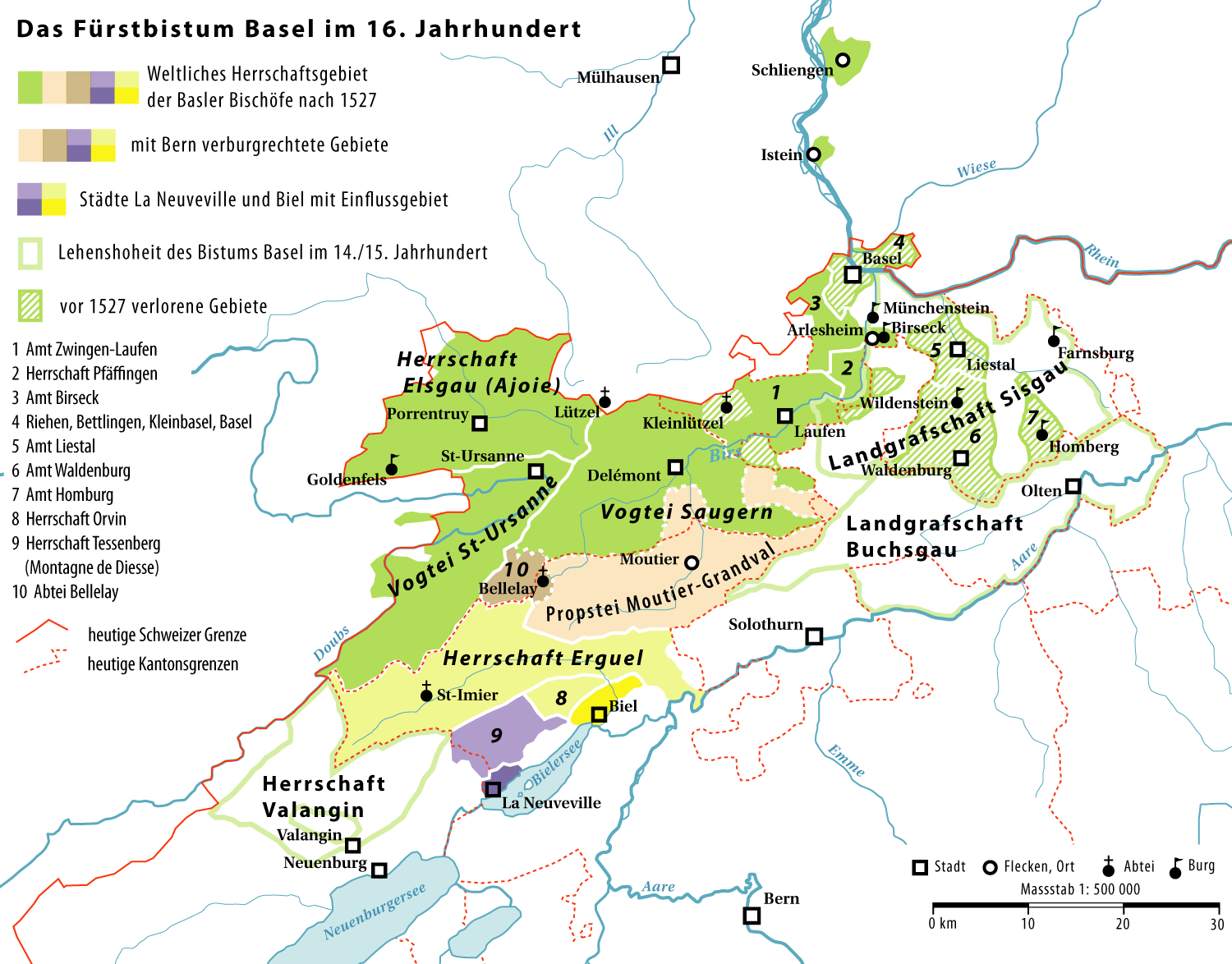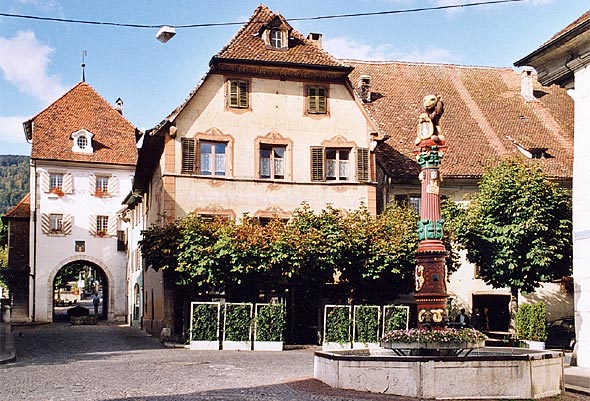|
Court BE
Court is a municipality in the Jura bernois administrative district in the canton of Bern in Switzerland. It is located in the French-speaking Bernese Jura (''Jura Bernois''). History Court is first mentioned in 1148 as ''Cort''. Between the 12th and 15th centuries the village of Mévilier or Minvilier existed between Court and Champoz. During the 15th Mévilier village was abandoned for an unknown reason. For most of its history, Court was part of the district of Orval which was owned by the provost of Moutier-Grandval Abbey. After the 1797 French victory and the Treaty of Campo Formio, Court became part of the French Département of Mont-Terrible. Three years later, in 1800 it became part of the Département of Haut-Rhin. After Napoleon's defeat and the Congress of Vienna, Court was assigned to the Canton of Bern in 1815. Originally, Court was part of the parish of Mévilier. By the 16th century it was part of the parish of Sorvilier. In 1531, Court adopted the new f ... [...More Info...] [...Related Items...] OR: [Wikipedia] [Google] [Baidu] |
Bernese Jura
Bernese Jura (french: Jura bernois, ) is the name for the French-speaking area of the Swiss canton of Bern, and from 2010 one of ten administrative divisions of the canton. Comprising the three French-speaking districts in the northern part of the canton, it contains 40 municipalities with an area of and a population () of . More than 90% of the population of the three districts speak French. The Bernese Jura of today comprises only three out of a total of seven districts which were known as the Bernese Jura during the period of 1815–1979. Of the remaining four, three seceded as the canton of Jura in 1979, while the fourth, the Laufen district, joined the canton of Basel-Landschaft in 1994. Additionally, Moutier, a municipality, voted to secede from Bern in a referendum in 2021 and join Jura, with the changeover expected to be implemented by 2026. History Most of the territory of the Bernese Jura was passed from the County of Burgundy to the Bishopric of Basel in AD 99 ... [...More Info...] [...Related Items...] OR: [Wikipedia] [Google] [Baidu] |
Jura Bernois (administrative District)
Bernese Jura (french: Jura bernois, ) is the name for the French-speaking area of the Swiss canton of Bern, and from 2010 one of ten administrative divisions of the canton. Comprising the three French-speaking districts in the northern part of the canton, it contains 40 municipalities with an area of and a population () of . More than 90% of the population of the three districts speak French. The Bernese Jura of today comprises only three out of a total of seven districts which were known as the Bernese Jura during the period of 1815–1979. Of the remaining four, three seceded as the canton of Jura in 1979, while the fourth, the Laufen district, joined the canton of Basel-Landschaft in 1994. Additionally, Moutier, a municipality, voted to secede from Bern in a referendum in 2021 and join Jura, with the changeover expected to be implemented by 2026. History Most of the territory of the Bernese Jura was passed from the County of Burgundy to the Bishopric of Basel in AD 9 ... [...More Info...] [...Related Items...] OR: [Wikipedia] [Google] [Baidu] |
Treaty Of Campo Formio
The Treaty of Campo Formio (today Campoformido) was signed on 17 October 1797 (26 Vendémiaire VI) by Napoleon Bonaparte and Count Philipp von Cobenzl as representatives of the French Republic and the Austrian monarchy, respectively. The treaty followed the armistice of Leoben (18 April 1797), which had been forced on the Habsburgs by Napoleon's victorious campaign in Italy. It ended the War of the First Coalition and left Great Britain fighting alone against revolutionary France. The treaty's public articles concerned only France and Austria and called for a Congress of Rastatt to be held to negotiate a final peace for the Holy Roman Empire. In the treaty's secret articles, Austria as the personal state of the Emperor promised to work with France to certain ends at the congress. Among other provisions, the treaty meant the definitive end to the ancient Republic of Venice, which was disbanded and partitioned by the French and the Austrians. The congress failed to achieve ... [...More Info...] [...Related Items...] OR: [Wikipedia] [Google] [Baidu] |
Biel
, french: Biennois(e) , neighboring_municipalities= Brügg, Ipsach, Leubringen/Magglingen (''Evilard/Macolin''), Nidau, Orpund, Orvin, Pieterlen, Port, Safnern, Tüscherz-Alfermée, Vauffelin , twintowns = Iserlohn (Germany) Biel/Bienne (official bilingual wording; , ) is a town and a municipality in the Biel/Bienne administrative district in the canton of Bern in Switzerland. Biel/Bienne lies on the language boundary between the French-speaking and German-speaking parts of Switzerland, and is bilingual throughout. ''Biel'' is the German name for the town; ''Bienne'' its French counterpart. The town is often referred to in both languages simultaneously. Since 1 January 2005, the official name has been "Biel/Bienne". Until then, the town was officially named Biel. The town lies at the foot of the first mountain range of the Jura Mountains area, guarding the only practical connection to Jura, on the northeastern shores of Lake Biel (, ), sharing the eastern ... [...More Info...] [...Related Items...] OR: [Wikipedia] [Google] [Baidu] |
Sonceboz
Sonceboz-Sombeval is a municipality in the Jura bernois administrative district in the canton of Bern in Switzerland. It is located in the French-speaking Bernese Jura (''Jura Bernois''). History Sonceboz-Sombeval is first mentioned in 866 as ''Summavallis''. In 1179 it was mentioned as ''Sommeval'' and in 1303 it was ''Suntzelbo''. Its location at the foot of the historic Pierre Pertuis pass (in operation since the Roman era) made the villages an important stopping point and transportation hub. The Petinesca Roman road ran to the east of Sonceboz before it crossed the Jura mountains. The ruins of a 4th-century Roman settlement have been discovered at the Le Châtillon ridge. After the collapse of the Roman Empire, a medieval settlement developed over the Roman settlement. In 999 Moutier-Grandval Abbey gave the local farms and the Summavallis chapel to the Prince-Bishop of Basel. The Prince-Bishop assigned Moutier-Grandval Abbey to administer the village as the bailiff and ... [...More Info...] [...Related Items...] OR: [Wikipedia] [Google] [Baidu] |
Delémont
Delémont (; fc, D'lémont; german: Delsberg, ) is the capital of the Swiss canton of Jura. The city has approximately 12,000 inhabitants . History The area of the municipality was already settled in the middle Bronze Age. Fifteen urn burials have been discovered in the municipality. There were late Bronze Age settlements south and west of the modern city. Several Iron Age buildings have been discovered south of town. There is also evidence of a Roman settlement, including a Gallo-Roman mausoleum and a small cache of coins. One or possibly several villas in the area may indicate the existence of a vicus near the town. The first historic mention of the name dates from 736 to 37 as ''Delemonte''. In 1131, the first mention of the German name ''Telsperg'' was recorded. It is also mentioned as Laimunt (1181) and Deleymunt (1225). The name is a combination of the Germanic ''Tello'' or ''Dagili'' with the Latin word ''mons'' for ''mountain''. Since the 7th century, the region bel ... [...More Info...] [...Related Items...] OR: [Wikipedia] [Google] [Baidu] |
Glass Blowing
Glassblowing is a glassforming technique that involves inflating molten glass into a bubble (or parison) with the aid of a blowpipe (or blow tube). A person who blows glass is called a ''glassblower'', ''glassmith'', or ''gaffer''. A '' lampworker'' (often also called a glassblower or glassworker) manipulates glass with the use of a torch on a smaller scale, such as in producing precision laboratory glassware out of borosilicate glass. Technology Principles As a novel glass forming technique created in the middle of the 1st century BC, glassblowing exploited a working property of glass that was previously unknown to glassworkers; inflation, which is the expansion of a molten blob of glass by introducing a small amount of air into it. That is based on the liquid structure of glass where the atoms are held together by strong chemical bonds in a disordered and random network,Frank, S 1982. Glass and Archaeology. Academic Press: London. Freestone, I. (1991). "Looking into Glass". ... [...More Info...] [...Related Items...] OR: [Wikipedia] [Google] [Baidu] |
Filial Church
A filial church, in the Roman Catholic Church, is a church to which is annexed the cure of souls, but which remains dependent on another church. The term comes from the Latin ''filialis'', from ''filia'', “daughter”. Description The term ''filial church'' may have more than one signification as to minor details. Ordinarily, a filial church is a parish church which has been constituted by the dismemberment of an older parish. Its rector is really a parish priest, having all the essential rights of such a dignity, but still bound to defer in certain matters to the pastor of the mother church. The marks of deference required are not so fixed that local custom may not change them. Such marks are: obtaining the baptismal water from the mother church, making a moderate offering of money (fixed by the bishop) to the parish priest of the mother church annually, and occasionally during the year assisting with his parishioners in a body at services in the older church. In some places this ... [...More Info...] [...Related Items...] OR: [Wikipedia] [Google] [Baidu] |
Parish Church
A parish church (or parochial church) in Christianity is the church which acts as the religious centre of a parish. In many parts of the world, especially in rural areas, the parish church may play a significant role in community activities, often allowing its premises to be used for non-religious community events. The church building reflects this status, and there is considerable variety in the size and style of parish churches. Many villages in Europe have churches that date back to the Middle Ages, but all periods of architecture are represented. Roman Catholic Church Each diocese (administrative unit, headed by a Bishop) is divided into parishes. Normally, a parish comprises all Catholics living within its geographically defined area. Within a diocese, there can also be overlapping parishes for Catholics belonging to a particular rite, language, nationality, or community. Each parish has its own central church called the parish church, where religious services take pla ... [...More Info...] [...Related Items...] OR: [Wikipedia] [Google] [Baidu] |
Protestant Reformation
The Reformation (alternatively named the Protestant Reformation or the European Reformation) was a major movement within Western Christianity in 16th-century Europe that posed a religious and political challenge to the Catholic Church and in particular to papal authority, arising from what were perceived to be errors, abuses, and discrepancies by the Catholic Church. The Reformation was the start of Protestantism and the split of the Western Church into Protestantism and what is now the Roman Catholic Church. It is also considered to be one of the events that signified the end of the Middle Ages and the beginning of the early modern period in Europe.Davies ''Europe'' pp. 291–293 Prior to Martin Luther, there were many earlier reform movements. Although the Reformation is usually considered to have started with the publication of the '' Ninety-five Theses'' by Martin Luther in 1517, he was not excommunicated by Pope Leo X until January 1521. The Diet of Worms of May 1521 ... [...More Info...] [...Related Items...] OR: [Wikipedia] [Google] [Baidu] |
Parish
A parish is a territorial entity in many Christian denominations, constituting a division within a diocese. A parish is under the pastoral care and clerical jurisdiction of a priest, often termed a parish priest, who might be assisted by one or more curates, and who operates from a parish church. Historically, a parish often covered the same geographical area as a manor. Its association with the parish church remains paramount. By extension the term ''parish'' refers not only to the territorial entity but to the people of its community or congregation as well as to church property within it. In England this church property was technically in ownership of the parish priest ''ex-officio'', vested in him on his institution to that parish. Etymology and use First attested in English in the late, 13th century, the word ''parish'' comes from the Old French ''paroisse'', in turn from la, paroecia, the latinisation of the grc, παροικία, paroikia, "sojourning in a foreign ... [...More Info...] [...Related Items...] OR: [Wikipedia] [Google] [Baidu] |
Congress Of Vienna
The Congress of Vienna (, ) of 1814–1815 was a series of international diplomatic meetings to discuss and agree upon a possible new layout of the European political and constitutional order after the downfall of the French Emperor Napoleon Bonaparte. Participants were representatives of all European powers and other stakeholders, chaired by Austrian statesman Klemens von Metternich, and held in Vienna from September 1814 to June 1815. The objective of the Congress was to provide a long-term peace plan for Europe by settling critical issues arising from the French Revolutionary Wars and the Napoleonic Wars without the use of (military) violence. The goal was not simply to restore old boundaries, but to resize the main powers so they could balance each other and remain at peace, being at the same time shepherds for the smaller powers. More fundamentally, strongly generalising, conservative thinking leaders like Von Metternich also sought to restrain or eliminate republicanism, ... [...More Info...] [...Related Items...] OR: [Wikipedia] [Google] [Baidu] |







.jpg)

